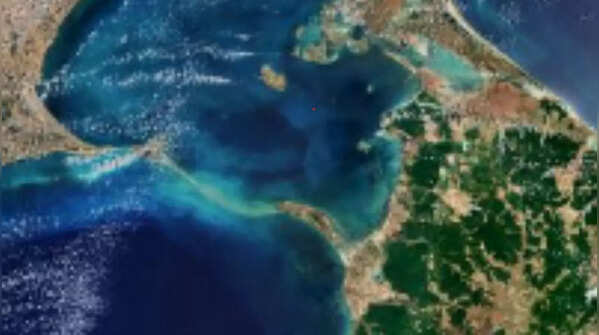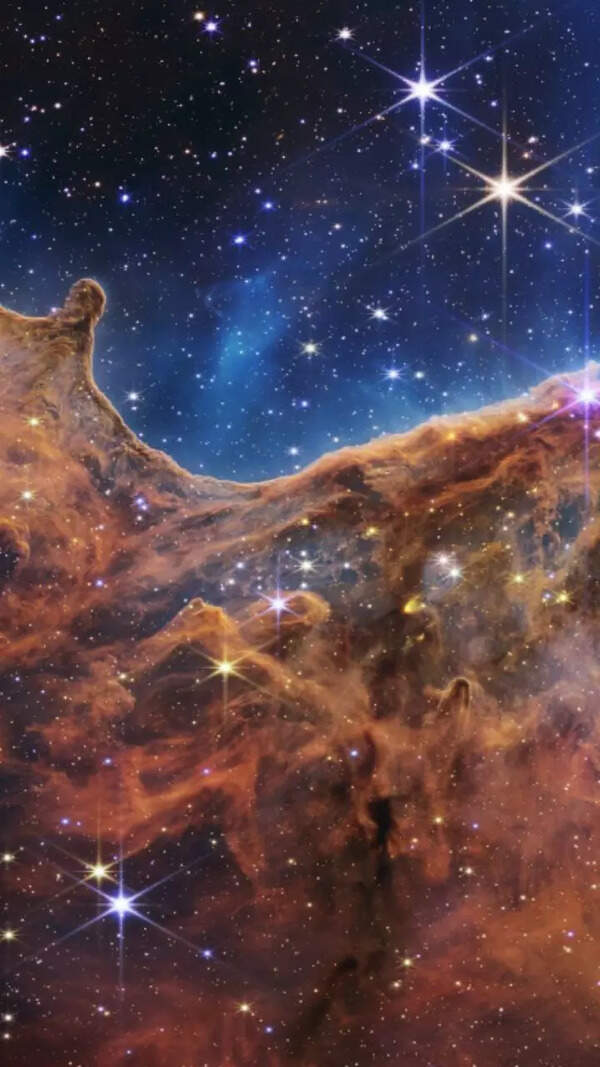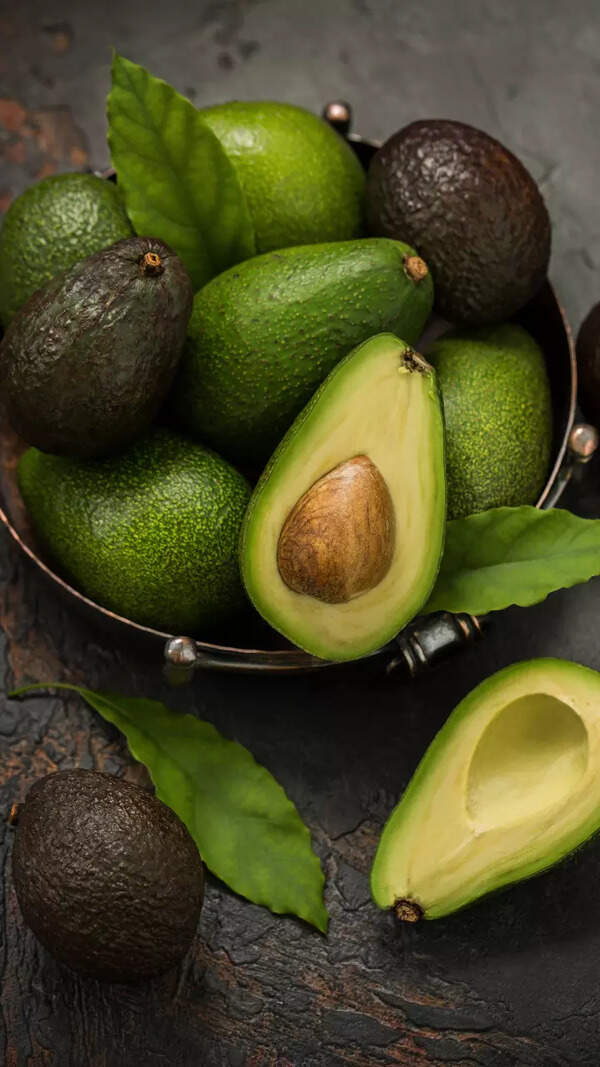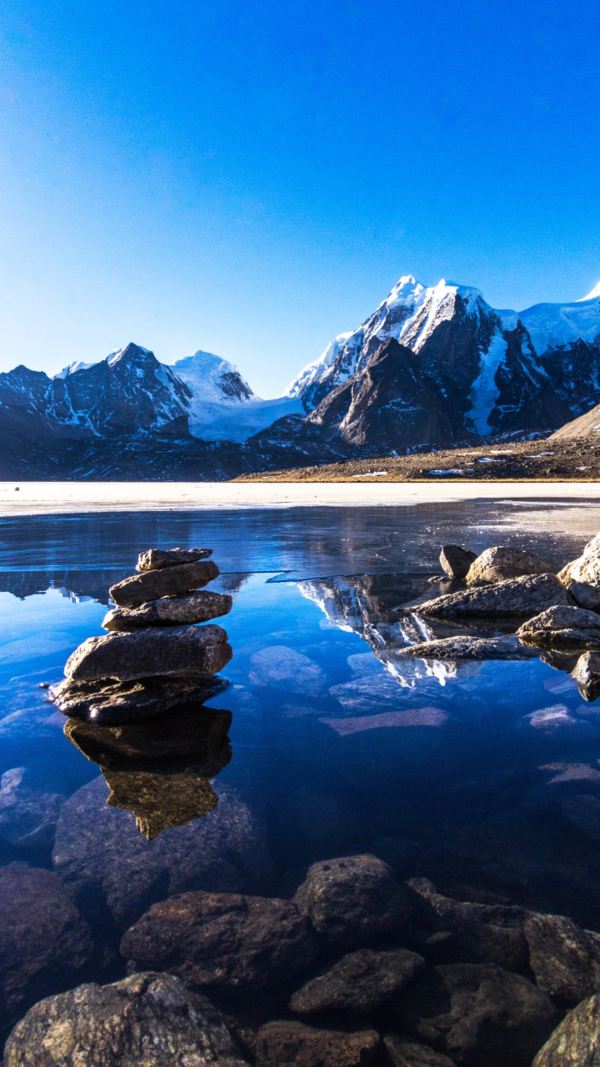- News
- lifestyle
- soul-search
- Floating stones of Ram Setu: Miracle or myth
Floating stones of Ram Setu: Miracle or myth

The Ram Setu
One of the most talked about and debated bridges in the world is the Ram Setu. A stretch of rocks in the shallow sea between Tamil Nadu and Sri Lanka, the Ram Setu is a symbol of faith, belief, and also controversy at times. With the satellite images captured of the Ram Setu, it looks like a broken bridge in the ocean, but when we think back about the epic Ramayan, the Ram Setu was the binding factor between India and Lanka, the land of Ram and the land of demon King Ravan. (Image: European Space Agency/Website)

PM Modi talks about the Ram Setu
A few days back, on April 6, PM Narendra Modi, when returning from Sri Lanka, posted on X about his view of the Ram Setu. The PM wrote ‘On the way back from Sri Lanka a short while ago, was blessed to have a Darshan of the Ram Setu. And, as a divine coincidence, it happened at the same time as the Surya Tilak was taking place in Ayodhya. Blessed to have the Darshan of both. Prabhu Shri Ram is a uniting force for all of us. May His blessings always remain upon us.’
(Image: @narendramodi/X)

The legend of Ram Setu
The legend of Ram Setu is one that every Indian, no matter what religion or caste, knows about. From little children who have been narrated snippets of Ramayan, to adults who grew up watching Ramayan movies and cartoons, everyone knows it was the bridge that united Lord Ram and Maa Sita.
It is said that when Maa Sita was kidnapped and taken away to Lanka by Ravan, Lord Ram reached Lanka with help of the Ram Setu, a bridge that was constructed by the Vanar sena.

How did it help?
The Ram Setu bridge played an important role for Lord Ram, Lord Hanuman, Lakshman, and their army to reach Lanka, which required crossing a vast ocean. With the help of Nal and Neel, Lord Hanuman, and millions of monkeys and other beings, the Ram setu was constructed with stones that held the name of Lord Ram and the ‘curse’ that Nal and Neel received.

The story of Nal and Neel and who constructed the Setu
The construction of the Ram Setu is often attributed most to Lord Hanuman and the vanar sena who threw the rocks in the ocean with Lord Ram’s name on them, and then they just floated in water. But according to legends and the epic, it was Nal and Neel who played an important role in the construction.
It is said that Nal and Neel were mischievous children, and as a punishment, the sages cursed them saying that whatever they throw into water will float instead of sinking. Years later, this curse became a blessing, and when the army wrote Lord Ram’s name on the stone, Nal and Neel touched them before throwing them in the water, making them float.

The floating stones
One of the most fascinating parts of the Ram Setu, from legends to myths, is that the floating stones have formed a bridge not just to Lanka but also to legends, mythology, and stories. Many people who visit Rameswaram claim to have seen such floating stones, and some temples and people in the region also preserve these stones and display them for visitors.

But is it real?
Although there is visible evidence of a chain-like structure under the water between India and Sri Lanka, be it NASA images or satellite studies and pictures, if it is the same stones that were laid by the vanar sena is a difficult question to answer.
Some Indian scholars and historians firmly believe that faith and science can coexist, but others are just of the opinion that these are geological phenomena that should not be attributed to mythical texts.









